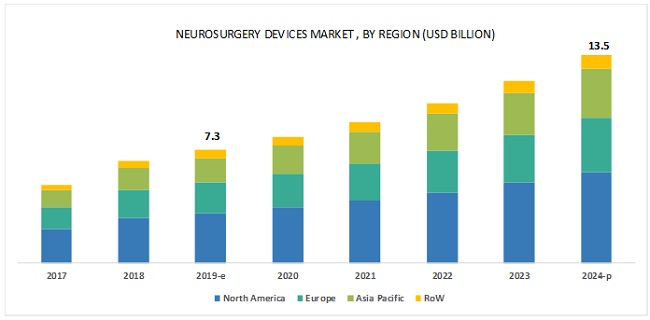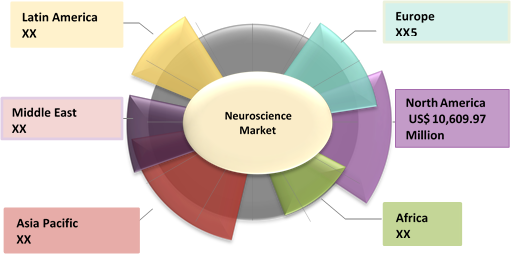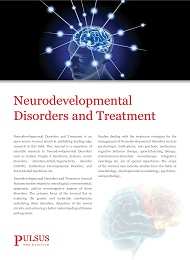Theme: Effects of Neurological disorders on quality of life
Neurology Conference 2022
Organizing Committee of Neurology conference 2022 invites you all to the 15th international Conference on Neurology and Neuromuscular Disorders in Rome, Italy on Oct 31- Nov 01, 2022. Conference is based on the theme “Effects of Neurological disorders on quality of life”. This conference will be the awesome opportunity for educators, young researchers and also for changing ideas and innovative methods of treatments.
With the coordination of organizing committee Conference on Neurology and Neuromuscular conference will be scheduled on Oct 31- Nov 01, 2022 in Rome, Italy focusing on the theme “Effects of Neurological disorders on quality of life”.
The main purpose of the Neurology Conference 2022 is to provide the training in diagnosing, treating and how to manage the brain disorder, nervous system and the functioning of the muscles. Neurology and Neuromuscular disorder Management will be the great platform to exchange new ideas and research. It will be two days event which holds the visitor’s attention to invest in the field of nerve system and neuromuscular disorder.
The main objective of the conference is to explore the development and new healing and medicinal path in Neurology.
Target Audience:
- Neurologists
- Psychiatrists
- Healthcare professionals
- Neurosurgeons
- Pharmacist
- Professors and students
- Neurological nurses
Why should attend?
People from around the world focused on learning on Neurology and Neuromuscular disorder and its advances.This will be best opportunity to meet the largest gathering of attendees.
Attendees can take benefits of:
- Sessions on all the latest innovations on particular areas
- Young research forum
- Poster competition
- Exhibitor presentation
- Video presentation
- Attendees can join whole day sessions can share their presentations and can express queries
- Global networking
- Novel techniques to benefit your research
- Accepted abstracts will be published in the respective journals.
Finally,Our aim to inspire new ideas and treatment techniques that will be beneficial across the spectrum of neurology and neuromuscular disorders.
1: Neurology
Neurology is a branch of medicine concerned with disorders of the nervous system. It deals with the detailed study and medication of all division of conditions and disorder involving the central and peripheral nervous systems, including their coverings, blood vessels and all effector tissue such as muscle. Neurological system relies heavily on the field of neuroscience, the scientific study of the nervous system. The doctor who specially designed in neurology is known as neurologist. The neurologist experienced to investigate or diagnose and treat a neurological disorder that affects the brain, spinal cord, and nerves. Neurologists do not implement surgery if any patient requires surgery they refer to neurosurgeons.
- Central nervous system
- Peripheral nervous system
- General neurology
- Cerebrovascular disease
- Behavioural neurology
2: Neuromuscular Disorders
Neuromuscular disorders affect the nerves that control our own voluntary muscles. Voluntary muscles are the ones which we can control by our self like in your arms and legs. Your nerve cells also called as neurons, send the messages that control these muscles. When the neurons become delicate or die, communication between your nervous system and muscles breaks down. As a result, your muscles weaken and waste away this weakness can lead to twitching, cramps, aches, pains, and joint and movement problems. Frequently it also affects heart function and your ability to breathe.More than a million people in the United States are affected by some form of neuromuscular disease, and about 40 percent of them are under age18.
- Amyotrophic lateral sclerosis
- Multiple sclerosis
- Myasthenia gravis
- Spinal muscular atrophy
3: Neurosurgery
Neurosurgery or neurological surgery is the medicinal specialty concerned with the prevention, detailed study, surgical treatment and improvement of disorders which affect any portion of the nervous system including the brain, spinal cord, peripheral nerves, and extra-cranial cerebrovascular system. A doctor who specializes in neurosurgery is known as Neurosurgeon they are not only brain surgeons, but they can medically trained neurosurgical specialists who can also help patients suffering from back and neck pain along with other illnesses ranging from trigeminal neuralgia to head injury and Parkinson's disease.
- Vascular neurosurgery
- Stereotactic neurosurgery/ functional neurosurgery
- Oncological neurosurgery
- Skull base surgery
- Spinal Neurosurgery
- Pediatric neurosurgery
4: Neurological manifestation in covid-19: the COVID -19 pandemic caused by acute respiratory syndrome coronavirus is of a scale that has not seen since influenza pandemic 1918. Although visible symptoms are associated with respiratory disease but neurological indication is being recognized increasingly. Growing number of cases has shown some neurological indication, where patients needs to be hospitalized or needed ICU.
5: Neurological diseases in COVID 19: It is seen that SARS-CoV-2 infection could be associated with the increased occurrence of neurological indication.Such as encephalopathy and encephalomyelitis, ischemic stroke and intracerebral hemorrhage, anosmia and neuromuscular diseases. The SARS-CoV-2 pandemic has affected all areas of medicine. It directly or indirectly causes neurological dysfunction in the body after or during the infection. Many reports shown a decline in the care of covid 19 patients with neurological disorders due to the special demands on health care systems during the pandemic.
Disorders:
- Encephalopathy
- Meningoencephalitis
- Guillain– barre syndrome (acute inflammatory demyelinating polyneuritis –AIDP)
- Acute disseminated encephalomyelitis
- Epilepsy
- Chemosensory disturbances
6: Psychiatry and Psychology
Psychiatry is the restorative forte committed to the determination, avoidance, and treatment of the mental issue. These incorporate different maladaptations identified with disposition, conduct, comprehension, and observations. Introductory mental appraisal of a man ordinarily starts with a case history and mental status detailed study. Psychology is the science of behaviour and minds which including conscious and unconscious conditions as well as thought and feeling. Physical detailed study’s and mental tests might be directed examples like neuroimaging or other neurophysiological procedures are utilized.
- Psychology
- Types of psycho therapy
- Hypnotherapy
- Counselling and psychotherapy
7: Spine and Spinal Disorders
Spine disorders occur in individuals irrespective of their age -spina bifida in infants to spinal stenosis in the elderly. Causes of spinal cord disorders include mainly injuries, infections, blocked blood supply, and compression by a fractured bone or a tumor. The boost in spinal disorders has been met with a leap in advancements in the diagnostic techniques. Endoscopic spine, MRI, X- rays CT and DEA are some of the generally used tools in diagnosing spinal disorders.
- Scoliosis
- Lumbar spinal stenosis
- Spina bifida
- Cauda equina syndrome
- Tumors
8: Neurogenetic and Neurometabolic Disorders
Neurogenetic and neurometabolic abnormalities are disorders that affect how the brain functions. They occur in young children of all ages, races and genders. Neurogenetic disease is the umbrella term of chronic diseases which describe the brain abnormalities that occur following changes in the genes of the child and these cause certain brain cells to develop and function abnormally. In the case of neurometabolic abnormalities; these disorders result from problems in the enzymes of the body’s cells which are either unable to either use foods to produce the energy the cell needs, or get rid of the breakdown products of the foods used.
- Biochemical genetics
- Gene mutation and disease
- Neural engineering
- Genetic engineering and gene sequencing
- Cancer neurogenetics
- Huntington disease
9: Neurological infections: Sometimes microorganisms invade the body, infect several organs and produce minor disturbances to serious problems. Common symptoms of disease are Pain, swelling, redness, and dysfunction. There may be heat in the infected area.
Common neurological infections:
- Brain inflammation
- Spinal cord inflammation
- HIV
- Infection which causes AIDS and damage immune system of body
10: Pediatric Neuromuscular disorder: The neuromuscular system involves all the muscles of the body and with the help of nerves connect with each other. There are a variety of neuromuscular disorders that can happens in children and affect the peripheral nervous system, which includes muscles, nerve-muscle, border nerves in organs and spinal cord cells. Neurology occurs in 6 in 1 lakh children. Neuromuscular disorders require clinical care by the physician or other health care professional.
- Muscular dystrophy
- Myasthenia gravis
- Spinal muscular atrophy
- Development disorder
11: Muscular Dystrophy: Muscular dystrophy is a category of inherited diseases which specify the weakness and muscle damage tissue, with or without nerve damage. The famous muscular dystrophies is Duchenne muscular dystrophy.
It includes:
- Becker
- Congenital
- Duchenne
- Distal
- Limb-gridle
12: Autoimmune Neuromuscular disorder: Specific neuromuscular diseases affecting borderline nerves, neuromuscular joints or muscles have a wide clinical spectrum with a variety of pathogenetic system. The peripheral nervous system can be directed at the context of post-infectious immune reaction or paraneoplastic syndromes. Pathogenetic system interacts between two antigen cells, B cells and T cells.
Some subtopics are:
- Chronic Inflammatory Demyelinating Polyradiculoneuropathy
- Paraproteinemic Neuropathy
- Paraneoplastic Neuropathy
- Vasculitic Neuropathy
- Autoimmune Myopathies
13: Alzheimer's Risk Factors, symptoms & Prevention
The brain immediately confronts us with its great complexity. Alzheimer's which is a type of Dementia. An Underlying Disease causes problems with memory, behaviour and thinking. As estimated, 5.3 million Americans of all ages have Alzheimer's disease in the recent survey. AD is the sixth leading cause of death in the United States and the fifth leading cause of death in Americans of age 65 and older. The etiological factors, other than older age includes genetic susceptibility. So it is important to exchange views on Causes and Prevention of Alzheimer’s, Alzheimer’s Disease Diagnosis and Symptoms, Alzheimer’s Disease Pathophysiology and Disease Mechanisms, Care Practice and Awareness. We are also going to analyse the Alzheimer ’s disease Imaging, Mechanisms for Treatment and Therapeutic Targets.
14: Neuroplasticity & Neurorehabilitation
Neuroplasticity is also known as brain plasticity and neural plasticity that encompasses the two synaptic and non-synaptic plasticity and it refers to advance in neural pathways and synapses due to difference in behavior, environment, neural processes, thinking, and emotions as well as to changes resulting from bodily. The goal of this session is to understand the brain plasticity advances in neurite remodeling and how to increase neural connections. Neuro-rehabilitation is a medical process which aims to aid recovery from nervous system damage and to minimize or compensate for any functional alterations resulting from it.
- Cortical remapping
- Clearly requiring controlled
- Intensive stimulation of impaired brain networks
- Cerebral palsy
- Brain injury
- Post-polio syndrome
15: Brain Tumor and Neuro-oncology
The abnormal cell growth and sudden reactions taking place from central nervous system results in brain tumor. Neuro-oncology is the study of brain and spinal cord neoplasms, which are very dangerous and life-threatening. Astrocytoma, glioblastoma, glioma, multiforme, ependymoma, pontine glioma, and brain stem tumours are some of the examples. Surgery may in some cases be the medicinal but malignant brain cancers turn to regenerate and emerge from absolution easily, especially highly malignant cases.
- Metastatic tumours
- Skull metastasis
- Spinal metastasis
- Peri-tumoral factors
- Morphological changes
- Blood-Brain barrier disruption (BBB)
16: Neuroradiology: Neuroradiology focuses on the nervous system and uses neuroimaging techniques to gain understanding and information about the condition of the patients. It helps doctors to find the irregularities of the brain, head as well as neck. Computed Tomography (CT) and Magnetic Resonance Imaging (MRI) these are the test by which machine takes high resolution picture of inner body. People will also be advancements in brain computer interface and deep brain studies.
- Neural technology
- Neuroimaging techniques
17: Neuromuscular respiratory: Patients with neuromuscular disease may develop respiratory failure due to weakness of the respiratory muscles, hypotonia of the bulbar muscles, existing anatomical tendencies, and decreased central respiratory drive. Respiratory neuromuscular failure can occur as a serious condition or chronic obstructive pulmonary disease.
- Distal myopathy
- Bulbar weakness
- Pompe disease
- Limb girdle muscular
18: Neuro Therapeutics, Diagnostics and Case Studies’
- Various neurology conferences are held all over the world in order to enhance and empower the knowledge of neuroscience. Addressing all areas pertinent to this endeavor concentrating on Novel therapeutics and Diagnostics at the cellular and molecular level. There is a profound increase in the diagnostics procedure and drug discovery in the field of Neurology.
- In order to accelerate the discovery of novel diagnostic therapy, the ICN 2020 encourages the gathering of researchers in order to discuss on the theme Stem cells in neurological disorder and treatment, Nerve injury and repair, Sleep disorders and headache, Neurogenesis, Neurotransmitter release and cell repair.
19: Nursing and Neuroscience
Neuroscience sometimes called as neural science, and it is one of the most specialized fields of medicine in the world. This field of drug focuses on the health of the nervous system including the brain and spinal cord. Neuroscience nurse is a nursing professional that advice patients suffering from neurological problems like injuries such as head and spinal trauma from accidents or disorder such as Parkinson’s disease, meningitis, encephalitis, epilepsy, and multiple sclerosis. Neuroscience nurses also effort with patients suffering from strokes and birth defects that have affected the nervous system.
- Neurosurgery
- Neurotrauma (brain and spinal cord injury)
- Neuroscience critical/intensive care
- Long-term neurological conditions (stroke, multiple sclerosis, Parkinson’s Disease, epilepsy)
- Life-limiting neurological conditions (motor neurone disease, Huntingdon’s disease)
20: Neuropharmacology
Neuropharmacology is the detailed study of how drugs influence cellular function in the nervous system and the neural system through which they influence behavior. There are two branches of neuropharmacology behavioral and molecular. Behavioral mainly focuses on the study of how drugs that affects human behavior (neuropsychopharmacology) including the study of how drug dependence and addiction affect the human brain. Molecular neuropharmacology involves the study of neurons and their neurochemical communication with the overall goal of developing drugs that have beneficial effects on neurological function.
- Anti-anxiety drugs
- Recent drug development
- Neuroimmuno pharmacology
- Neuro chemical interaction
- Latest advancement in neuropharmacological therapy
- Genome wide association studies
- Biochemical genetics
21: Brain Mapping
Brain mapping is especially described to the have a look at of the anatomy and feature of the mind and spinal twine via the usage of imaging, immunohistochemistry, molecular and optogenetics, stem mobile and cell biology, engineering, neurophysiology and nanotechnology. Brain mapping strategies are continuously evolving, and rely upon the improvement and refinement of photo acquisition, representation, analysis, visualization and interpretation strategies. Functional and structural neuroimaging are on the middle of the mapping element of mind mapping
22: Neurological Disorders
The major reason for Neurological Disorders is that the progressive loss of structure and performance of Neurons. It also can cause the death of Neurons. medicine Disorders could cause diseases like Parkinson’s, ALS, Huntington’s, etc. several items of analysis square measure occurring however these diseases square measure incurable. It advances to degeneration or death of Nerve cells. This deterioration causes psychological feature behaviour and different clinical options.
23: Pediatric Neurology
Pediatric neurology or child neurology refers to a specialized branch of medicine that deals with the diagnosis and management of neurological conditions in neonates (newborns), infants, children and adolescents. The discipline of child neurology encompasses diseases and disorders of the spinal cord, brain, peripheral nervous system, autonomic nervous system, muscles and blood vessels that affect individuals in these age groups. If a child has problems that involve the nervous system, a pediatric neurologist has the specialist training and knowledge to assess, diagnose and treat the child. The conditions dealt with by pediatric neurologists vary considerably, from relatively simple disorders such as migraine or cerebral palsy through to more complex and rare conditions such as metabolic disease or neurodegenerative disorders.
Genetic diseases of the nervous system
Childhood epilepsy
Autism spectrum disorders
Intellectual disability
Neuromuscular medicine
Hydrocephalus or excess fluid build-up in the brain
Movement disorders such as cerebral palsy
Febrile seizures
Congenital birth defects affecting the brain and spinal cord such as spina bifida
Neurological developmental problems during childhood
24: Psychosomatic Disorders
The global market for neurology should grow from $33.3 billion in 2019 to $39.4 billion by 2024 at a compound annual growth rate (CAGR) of 3.5% for the period of 2019-2024.

The report highlights the current and future market potential of neurology medicines and provides a detailed analysis of the competitive environment, regulations, epidemiology of neurological diseases, merger and acquisition, drivers, restraints, and pipeline drugs in the market. The report also covers market projections through 2024.
The report details market shares of neurology based on different disease indication. Based on neurological disorders the market is segmented into Parkinson Diseases, Alzheimer Diseases, Psychotic Disorders, Epileptic Disorders, Autism Disorders, and Brain Tumor Diseases. Each diseases segment covers therapeutics and regional analysis.

The market of Parkinson Diseases covers anti-Parkinson’s drugs. The market is segmented into drug class and region. Based on drug class the market is segmented into dopaminergic, enzyme inhibitors, dopamine agonists and other Anti-Parkinson’s medications. Based on region the market is segmented into North America, Europe, Asia-Pacific, South America and Middle East and Africa.
Conference Highlights
- Neurology
- Neuromuscular Disorders
- Neurosurgery
- Neurological manifestation in covid-19
- Neurological diseases in COVID 19
- Psychiatry and Psychology
- Spine and Spinal Disorders
- Neurogenetic and Neurometabolic Disorders
- Neurological infections
- Pediatric Neuromuscular disorder
- Muscular Dystrophy
- Autoimmune Neuromuscular disorder
- Neuroplasticity
- Brain Tumor and Neuro-oncology
- Neuroradiology
- Neuromuscular respiratory
- Neuro Therapeutics, Diagnostics and Case Studies
- Nursing and Neuroscience
- Neuropharmacology
- Pediatric Neurology
- Neuropsychology and Neurorehabilitation
- Psychosomatic Disorders
To share your views and research, please click here to register for the Conference.
To Collaborate Scientific Professionals around the World
| Conference Date | October 31-01, 2022 | ||
| Sponsors & Exhibitors |
|
||
| Speaker Opportunity Closed | |||
| Poster Opportunity Closed | Click Here to View | ||
Useful Links
Special Issues
All accepted abstracts will be published in respective Our International Journals.
- Journal of Neurodevelopmental Disorders and Treatment
- Integrative Neuroscience Research
- Journal of Clinical and Experimental Neurology
Abstracts will be provided with Digital Object Identifier by







